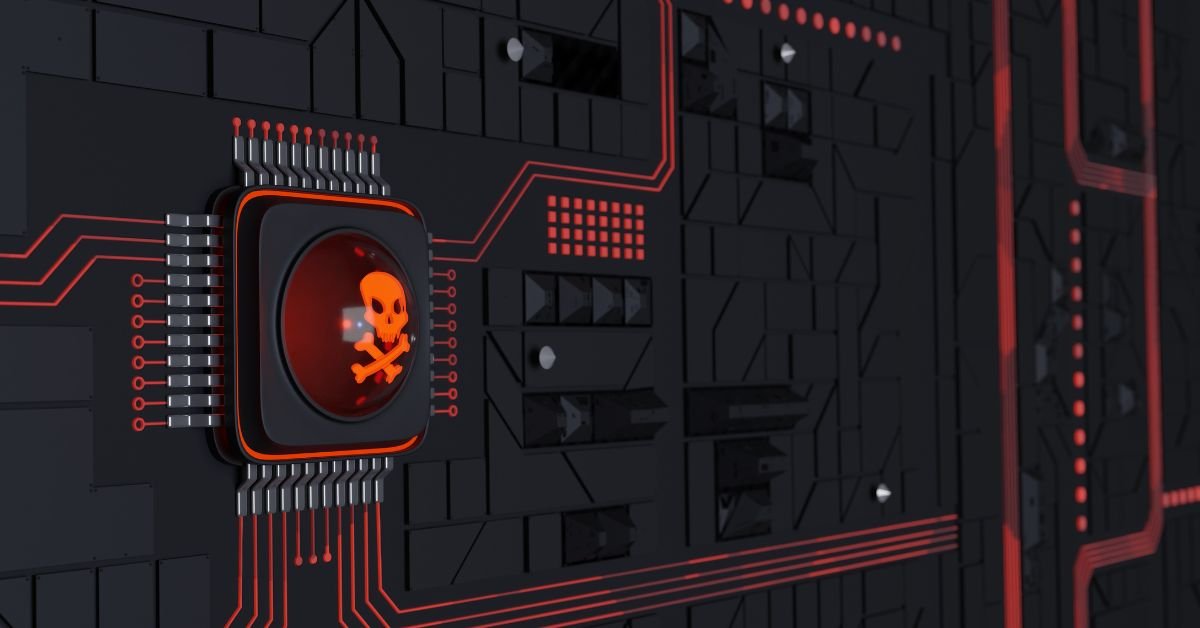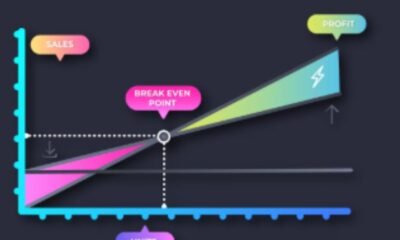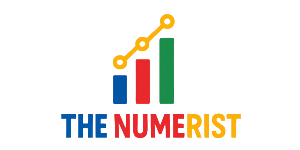TECH
Cursed-Memes.com: Where Dark Humor Meets Digital Sorcery

Cursed‑Memes.com, digital alchemy transforms ordinary images into twisted mirrors of our collective subconscious. This platform blurs the lines between comedic satire and unsettling visuals, each post delivering that signature feeling of unease—while often making you laugh. As a hub of dark humor, internet culture, and viral meme trends, Cursed‑Memes.com has made itself known among fans of surreal content, edgy visual tweaks, and the chaotic energy that fuels modern meme creation.
Understanding the Essence of Dark Humor
At its core, cursed memes thrive on dark comedy, a genre which balances between hilarity and discomfort. By juxtaposing familiar scenarios with grotesque or uncanny elements, creators tap into our primal reactions. The result? A collision of laughter and bewilderment. Cursed‑Memes.com is abundant with surreal modifications, internet shorthand, and visual glitches that provoke both recognition and cognitive dissonance.

Meme Mechanics: What Makes Content “Cursed”
Cursed content employs a blend of visual distortion, odd cropping, and intentionally off-putting captions—often using slang like “blep,” “sussy,” and “based.” These internet subculture phrases function as magic spells that enhance dissonance and absurdity. When a once-mild image becomes surreal through manipulation, the result is a powerful blend of nostalgia and alienation.
By experimenting with these elements, users of Cursed‑Memes.com collectively engage in a form of digital sorcery. They remix pop culture, everyday snapshots, and botched edits into a tapestry of humor that, paradoxically, feels both familiar and alien.
Anatomy of a Cursed Meme Post on Cursed‑Memes.com
On visiting the site, you’ll typically encounter a grid showcasing content with wildly varying styles—but the hallmarks are the same:
- Low-fi glitches – pixelation, color shifts, artifacts that imply corruption.
- Bizarro captions – odd subject-verb mismatches, random mentions of “bread,” “infinite void,” “big yikes.”
- Remixed pop references – a cropped Disney character with mismatched fonts or surreal backdrops.
- Subtle internet slang – phrases like “pog,” “glitched out,” or “cheems energy.”
Together, these elements form the visual language of cursed memes, amplifying the effect of each other. The image, caption, and implied meaning become inseparable in delivering both comedic and disturbingly aesthetic experiences.
Why Cursed Memes Resonate with Online Communities
1. Shared Irony and Schadenfreude
The appeal lies in community: users recognize the trope and feel connected through a shared in-joke. The absurdity triggers a sense of belonging among those “in the know.”
2. Reaction Reflex
Your brain reacts before you think: you see a warped face, feel a twinge of confusion, then laugh. This reflexive processing is at the heart of cognitive neuroscience of humor.
3. Viral Participation
Any user can upvote, remix, or repost. The site encourages interaction, remixing, and spawning new meme variants—fueling viral dynamics and digital creativity.
The Role of Curation and Community on Cursed‑Memes.com
Cursed‑Memes.com thrives because of its active community. Moderators highlight trending formats and moderate submissions to maintain the “cursed quality”—not too polished, not too familiar.
Community features include:
- Tagging systems (“#glitch,” “#absurd,” “#morph”)
- Comment threads with meme slang banter
- Remix challenges (“Glitchify your pet pic”)
- Daily “Top Cursed” galleries
These tools sustain a constant churn of fresh, evolving content, contributing to a sense of digital folklore creation.
Language & Memetic Evolution on the Site
The site’s lexicon is a blend of slang, jargon, and internet shorthand—nerd speak, slang morphs, and syntax noise. The function is clear: it reinforces group identity while lowering barriers to creativity. Some terms that often show up include:
- “meme-lore” and “meme archetypes” (for tracking recurring formats like “deep fried” or “slug glitch”)
- “meta-meme” (self-aware memes about memes themselves)
- “glitch aesthetic” (a digital visual style as art)
- “hyper-ironic satire” (where mocking seriousness becomes funny)
These phrases don’t just describe—they shape art in cultural and stylistic vocabulary that grows as contributors iterate.
Making a Cursed Meme Yourself: A Quick Guide
Tools of the Trade
- Image editors: free apps like Photopea or GIMP work wonders.
- Filters and glitch plugins: apply VHS-style distortion or datamosh effects.
- Caption mash-ups: random noun-verb chains like “mango engine regrets.”
Step-by-Step Workflow
- Choose a relatable base image—pets, cartoons, screenshot with potential.
- Distort visuals: bleed colors, pixel-flip, stretch fonts.
- Apply bizarre caption: mix slang, random words, surreal imagery.
- Observe aesthetic: tweak until it teeters on the edge—funny but off.
- Tag it (#cursed, #glitchmeme), upload to site—see community reactions.
This process highlights creativity, collaborative editing, and crowd-driven aesthetic standards.
Broader Cultural Significance
Cursed‑Memes.com does more than just entertain—it reflects societal disillusionment, intentional confusion, and humor as a coping mechanism. Scholars of internet sociology point out that surreal humor often thrives in environments of uncertainty.

By providing a seemingly chaotic aesthetic, cursed memes echo the unpredictable nature of modern life—echoing themes of postmodernism, digital absurdism, and social commentary through visual art.
FAQs
What defines a “cursed meme”?
A cursed meme typically combines visually unsettling edits (like glitches, distortions) with odd, disjointed or surreal captions. It creates a cognitive dissonance—funny yet unnerving—making you laugh and squirm at the same time.
How did Cursed‑Memes.com become popular?
Through community-driven uploads, remix challenges, and sharing viral formats across platforms like Reddit and Twitter, cursed memes gained traction by tapping into collective taste for surreal humor and internet in-jokes.
Can I reuse images from the site?
Check the site’s usage policy or individual meme licenses. Many are user-generated and may fall under fair use, but attribution and compliance with copyright is recommended.
Are cursed memes harmful?
While most are harmless, some disturbing visuals might not suit younger or sensitive audiences. Viewers should be aware of potentially unsettling content tagged as “glitch” or “deep fry” styles.
What tools do creators use?
Commonly: Photopea, GIMP, Photoshop, glitch plugins, and apps that simulate VHS effects or pixel distortions. Combining these with absurd text editors makes the hallmark “cursed” look.
Conclusion
Cursed‑Memes.com is a thriving digital crucible where creators blend dark humor, surreal edits, and internet slang to produce memes that pique curiosity, elicit laughter, and occasionally disturb. Behind each distorted face and nonsensical caption is a deliberate creative choice—one that reflects modern collective anxiety and the playful embrace of chaos. Whether you’re a seasoned memer or a new visitor, this platform offers a compelling glimpse into the future of online expression—one where digital sorcery turns everyday images into shareable cultural artifacts.
TECH
Top AI Tools You’ll Find on aliensync.com

At its core, aliensync.com positions itself as a technology trend forecasting hub, combined with elements of an AI creative workspace and a software innovation blog. It doesn’t aim to be everything, but it aims to be the bridge between the rapidly shifting worlds of AI, Web3, blockchain, decentralized finance, and modern digital communities.
Think of it this way: as AI tools become easier to use and more integrated into daily workflows, creators need spaces where they can discover new trends, collaborate, and understand the risks and opportunities of emerging tech. Meanwhile, developers and tech analysts want deeper commentary — not surface-level summaries.
aliensync.com attempts to sit in the middle, offering content and tools for:
- AI enthusiasts
- Web3 developers
- Blockchain researchers
- Content creators using AI tools
- Crypto analysts
- Software engineers
- Early adopters wanting future-focused insights
- Teams exploring digital collaboration platforms
- Innovators tracking decentralized apps
By connecting these groups, the platform fills a gap that traditional media websites often miss.
The Rise of the AI Creative Workspace
One of the strongest themes highlighted on aliensync.com is the shift toward AI creative workspace ecosystems. Instead of separating content creation tools from collaboration platforms, AI tools are merging into unified spaces where creators can draft, edit, plan, and publish faster.
Why this matters in 2025
AI tools are no longer seen as “helpers.” They’re core components of everyday workflows. From writers to developers to designers, the idea of using AI has become “default.”
But here’s the interesting part — most AI tools today still exist in silos. You have:
- One platform for AI writing
- Another for design
- Another for video
- Another for code generation
- Another for research
The big shift in 2025 is AI unification, where platforms combine multiple forms of creation into a single workspace. aliensync.com taps into this narrative by analyzing tools, frameworks, UX patterns, and creator behaviors emerging from this trend.
One user described the shift perfectly in a tweet earlier this year:
“AI tools used to be shortcuts. Now they’re a full workspace, a co-creator, and sometimes even the project manager.”
The line between human and automated creativity is fading — and aliensync.com leans into these discussions deeply.
Digital Collaboration Platforms: A New Standard for Innovation
It’s impossible to talk about modern tech without addressing the rise of digital collaboration platforms. Whether it’s remote work, decentralized creative teams, or cross-border developer groups, online collaboration has never been more important.
While platforms like Notion, Figma, Miro, or Slack dominate the mainstream, newer platforms are emerging that go beyond productivity — focusing instead on AI-powered collaboration.
What aliensync.com highlights
The platform touches on themes such as:
- AI-assisted team workflows
- Real-time creative input from hybrid AI–human teams
- Multi-user AI content generation
- Decentralized collaboration that uses blockchain for transparency
The idea isn’t just to work together, but to think together, with AI functioning as a participant rather than just a tool.
And in 2025, that concept is more relevant than ever.
Blockchain and Crypto Insights: A Balanced, Research-Driven View
While many websites treat blockchain as either hype or doom, aliensync.com approaches blockchain and crypto insights with a balanced, research-first tone.
Instead of repeating generic crypto news, the platform approaches topics such as:
- technology fundamentals
- blockchain trend analysis
- decentralized finance commentary
- risk mitigation strategies
- future of decentralized apps
- Web3 tech news with real-world context
This is crucial because the blockchain world has matured significantly since the early hype cycle. Institutional adoption, compliance frameworks, security improvements, and practical decentralized applications (dApps) are shaping the next phase.
Why this benefits readers
Most mainstream crypto blogs still lack clarity or domain expertise. By taking a research-based approach, aliensync.com resonates with:
- data-focused analysts
- Web3 developers
- researchers studying decentralized networks
- investors seeking technology-first perspectives
This aligns with modern EEAT expectations. Readers want expertise, and platforms like aliensync.com build trust by grounding insights in logic, not hype.
Web3 Tech News and the Decentralized Internet
Another recurring theme is Web3 tech news, especially the structural changes happening across decentralized networks.
Whether it’s:
- new consensus mechanisms
- evolutions in interoperability
- identity ownership
- cross-chain tools
- tokenized communities
- modular blockchain architectures
aliensync.com delivers commentary that helps readers understand why these developments matter, not just what happened.
2025 is shaping up to be a turning point for Web3. With widespread decentralization in identity systems, data storage, and creator economies, the conversation has shifted from “What is Web3?” to “How soon will it be mainstream?”
Platforms that can translate complex technical movements into actionable insights will thrive — and this is where aliensync.com steps in.
AI-Powered Content Creation: The New Creative Normal
Creators today face a common challenge: How do you maintain originality when everyone is using the same tools?
That’s where AI-powered content creation trends become essential. aliensync.com explores:
- new creative AI tools
- multi-modal generation
- AI-driven storytelling frameworks
- smart editing companions
- brand-specific AI models
- collaborative AI content hubs
The interesting part isn’t the technology — it’s the workflow. AI is no longer just generating content. It’s shaping creative decisions, providing direction, and helping creators break through mental blocks.
The biggest advantage
AI gives creators superpowers.
The biggest risk?
Everyone starts sounding the same.
That’s why creators need platforms, guides, and analysis that teach them how to use AI tools without losing their voice. aliensync.com frequently explores these nuances, providing practical and authentic perspectives.
The Future of Decentralized Apps (dApps)
As the Web3 ecosystem matures, decentralized applications are becoming more versatile, more scalable, and more deeply integrated into everyday products.
The platform breaks down:
- emerging dApp features
- decentralized identity systems
- tokenized access layers
- privacy-first applications
- decentralized finance tools
- security risks and best practices
In 2025, the shift toward dApps isn’t theoretical anymore. Large brands, gaming studios, creator platforms, and even small businesses are exploring decentralized systems for:
- authentication
- user rewards
- secure data storage
- peer-to-peer value exchange
aliensync.com analyzes these transitions with nuance, helping readers stay ahead of the curve.
Emerging Social Platforms Analysis
A unique niche covered by aliensync.com is emerging social platform analysis. With so many new creator-focused apps launching every quarter, it’s hard to keep track.
The platform often breaks down:
- creator economy evolution
- algorithm design trends
- engagement models
- decentralized social networks
- AI-driven content recommendations
- privacy-first communities
- digital identity layers
In an online world dominated by noise, algorithm distrust, and data-ownership debates, the rise of decentralized social platforms is accelerating.
The platform brings clarity by comparing approaches, reviewing user behavior, and highlighting long-term implications.
Technology Trend Forecasting: Looking Ahead to 2026 and Beyond
What sets aliensync.com apart is its commitment to technology trend forecasting.
Rather than focusing only on “what’s hot now,” it pushes into the next 12–24 months, exploring:
- AI autonomy advancements
- blockchain-as-infrastructure evolution
- socially aware algorithms
- hybrid human-AI creative ecosystems
- immersive digital collaboration
- natural language interface revolutions
- cross-platform digital identity systems
These forecasts aren’t just speculation. They’re grounded in:
- user behavior trends
- technological adoption curves
- cross-industry innovation signals
- developer ecosystem growth
- enterprise integration strategies
This long-term view helps readers make smarter decisions today.
FAQ’s
What is aliensync.com and what does it focus on?
aliensync.com is a forward-thinking platform covering AI creative workspaces, blockchain insights, digital collaboration tools, Web3 updates, decentralized app innovations, and software innovation trends. It serves creators, developers, and tech enthusiasts seeking future-focused analysis.
Is aliensync.com useful for learning about AI-powered content creation?
Yes. The site discusses creative AI tools, workflow optimizations, AI-assisted collaboration, and how creators can use intelligent tools to improve storytelling, editing, design, and production without sacrificing authenticity.
Does aliensync.com provide blockchain and crypto insights for beginners?
The platform provides balanced, research-driven blockchain and crypto analysis. While it’s valuable for beginners, it’s especially helpful for readers wanting deeper Web3 tech news, decentralized finance commentary, and long-term blockchain trend analysis.
How does aliensync.com help developers and researchers?
Developers benefit from its coverage of future decentralized apps, digital identity systems, software innovation discussions, and technology trend forecasting. It helps tech professionals stay ahead of shifts in architecture, AI frameworks, and Web3 infrastructure.
Final Thoughts
The digital world is evolving rapidly. AI is becoming more collaborative, Web3 is becoming more practical, and creators are adopting new tools faster than ever. In this environment, platforms like aliensync.com provide clarity, insight, and strategic awareness.
TECH
passwordreset.katyisd.org: Secure Access Made Easy

Simply put, passwordreset.katyisd.org is the official Katy Independent School District’s online password management portal. It’s a self-service tool that allows students, parents, and staff to:
- Reset forgotten passwords securely.
- Recover locked accounts.
- Update login credentials without contacting IT support.
- Access other district services through one unified login system.
The tool integrates directly with the Katy ISD password reset tool and is part of the district’s initiative to improve cybersecurity, reduce downtime, and empower users to manage their credentials independently.
Why Password Management Matters in Education
Every year, cybersecurity threats against school systems increase. Phishing emails, weak passwords, and accidental account lockouts can disrupt not just learning—but also administrative workflows. By using the Katy ISD self service password reset feature, the district ensures everyone stays connected without compromising safety.
Strong password management also:
- Protects student data and personal information.
- Prevents unauthorized access to district systems.
- Reduces the IT department’s workload.
As one high school student put it on social media, “I forgot my MyKaty login at least twice this semester, but the password reset site literally saved me before exams.”
How to Use [passwordreset.katyisd.org] Step-by-Step
Step 1: Access the Portal
Open your preferred browser and go to passwordreset.katyisd.org. Always ensure the URL includes “.org” and uses a secure HTTPS connection.
Step 2: Identify Yourself
Enter your Katy ISD username (usually your student or staff email). If you’re unsure, you can contact your school’s administrative office for help retrieving your username.
Step 3: Verify Your Identity
You’ll be asked to confirm your identity using pre-set recovery options, which could include:
- Security questions
- An alternate email
- A phone number for SMS verification
Step 4: Create a New Password
Follow the password guidelines:
- Use at least 8–12 characters.
- Include uppercase, lowercase, numbers, and symbols.
- Avoid personal details (like your name or birthday).
Step 5: Confirm and Log In
After creating your new password, log back in to MyKaty or other district platforms. You’re good to go!
Common Problems with [passwordreset.katyisd.org]
Even a reliable system can run into occasional issues. Here are some frequent errors and how to fix them:
“User not found” error
This usually occurs when you mistype your username or try using an outdated email format. Double-check the spelling and try again.
“Verification failed” message
Make sure your recovery email or phone number is up-to-date in your district records. If not, you’ll need to contact the Katy ISD account recovery team.
Expired password reset link
Links are typically valid for a limited time (around 15 minutes). Request a new link if yours has expired.
The Benefits of the Katy ISD Self Service Password Reset
The Katy ISD self service password reset feature saves time and stress for everyone in the district. Here’s how:
| Feature | Benefit | Ideal For |
|---|---|---|
| Instant reset | No need to wait for IT help | Students & staff |
| 24/7 access | Reset anytime, anywhere | Parents |
| Secure verification | Reduces hacking risk | Entire district |
| Multi-platform support | Works across MyKaty, Canvas, and email | All users |
It’s user-friendly, reliable, and integrated into the district’s larger cybersecurity framework.
Katy ISD Student Password Reset: Quick Access
Students often face the most login issues, especially during exam weeks or digital testing. The Katy ISD student password reset section ensures they can get back into their accounts without teacher intervention.
Pro Tip: Set up your password recovery options as soon as you receive your student login credentials. That way, you won’t be locked out unexpectedly.
Katy ISD Parent Password Reset: Keeping Families Connected
Parents need access too—for checking grades, communicating with teachers, and monitoring attendance. The Katy ISD parent password reset function on passwordreset.katyisd.org provides quick recovery for parent portal accounts.
To ensure success, parents should:
- Register an alternate email address.
- Set up a memorable security question.
- Save their login credentials in a secure password manager.
Katy ISD Staff Password Change: Security at Work
District employees are responsible for protecting sensitive student data. The Katy ISD staff password change tool helps maintain account security across internal systems.
Staff are encouraged to update their passwords regularly and never share them, even with trusted coworkers. By doing this, they uphold Katy ISD’s strong data protection policies.
Advanced Security Features in 2025
The 2025 version of passwordreset.katyisd.org login now includes new cybersecurity upgrades:
- Multi-factor authentication (MFA): Adds an extra verification step for better security.
- Device recognition: Automatically detects familiar devices for faster resets.
- Password history check: Prevents reusing recent passwords.
- Enhanced encryption: Keeps all reset activities confidential.
These enhancements reflect Katy ISD’s commitment to student and staff privacy.
Katy ISD MyKaty Password Help: A Central Hub
If you’re stuck, the Katy ISD MyKaty password help section provides links to district guides, tutorials, and tech support contacts. You can even find short video walkthroughs explaining how to recover or reset your login credentials.
Remember: If your issue isn’t solved within 15 minutes, it’s always best to contact the school’s IT help desk for personalized support.
Best Practices for a Secure Account
- Change passwords every semester.
- Use unique passwords for school and personal accounts.
- Enable MFA (if available).
- Avoid sharing devices without logging out.
- Stay alert for phishing emails.
Good cybersecurity habits prevent unwanted access and ensure smooth digital learning for everyone.
Troubleshooting Katy ISD Forgot Username Password
For users who can’t remember their login credentials, the Katy ISD forgot username password option is available on the same portal.
To recover your username:
- Visit the main login page.
- Click “Forgot Username.”
- Enter your registered email.
- Follow the instructions in your inbox.
This is especially useful for parents managing multiple student accounts.
Real-Life Example: The Power of Quick Access
A Katy ISD teacher once shared, “My entire class was about to start a digital quiz, and half the students couldn’t log in. Thanks to the password reset tool, everyone was back online in five minutes.”
This story highlights why self-service systems like passwordreset.katyisd.org are not just convenient—they’re essential for modern education.
The Pros and Cons of Using passwordreset.katyisd.org
| Pros | Cons |
|---|---|
| Easy to use and accessible 24/7 | Requires setup beforehand |
| Reduces IT workload | Dependent on internet connection |
| Supports all user roles | Some users forget to update recovery info |
| Integrates with all district apps | Reset links expire quickly |
While no system is perfect, the advantages of Katy ISD’s password management platform far outweigh the occasional inconvenience.
Security Risks and How to Avoid Them
Although passwordreset.katyisd.org is secure, users should still be mindful of online threats:
- Phishing: Always verify official emails before clicking links.
- Weak passwords: Avoid simple words or phrases.
- Unsecured Wi-Fi: Don’t reset passwords on public networks.
By practicing good digital hygiene, students and staff can protect both their accounts and the district’s entire digital ecosystem.
FAQs
How do I use passwordreset.katyisd.org for a student account?
Go to the site, enter your username, verify your identity, and create a new password following the provided guidelines.
Can parents reset their own passwords?
Yes. The Katy ISD parent password reset option allows parents to recover or change their credentials anytime.
What if I don’t receive the reset email?
Check your spam folder or verify that your alternate email is correct in the district’s records.
How often should I change my Katy ISD password?
It’s recommended to change it every 90 days or once per semester to maintain security.
Final Thoughts
In a world where digital education is the new norm, maintaining secure and reliable access to your school accounts is critical. passwordreset.katyisd.org is more than just a recovery tool—it’s the foundation of seamless communication between students, parents, and staff.
TECH
How Daxillzojid54 Redefines Online Branding

Daxillzojid54 isn’t just a random name—it represents the new language of the internet: short, cryptic, and algorithmically aesthetic. These names are part of a growing trend where brands and individuals prefer invented names and alias design that look futuristic yet remain memorable.
Think of daxillzojid54 as a brand identity code—a blend of personalization and abstraction. Such identifiers often serve as codenames for tech projects, AI models, or blockchain-based digital assets. They reflect creativity, uniqueness, and a break from traditional branding conventions.
In digital communities, these identifiers also serve another purpose: creating a sense of mystery handle. When someone sees a name like daxillzojid54, they’re instantly intrigued—what does it represent? A person? A project? A token? That curiosity itself drives engagement.
The Rise of Abstract and Invented Names
A Shift from Familiar to Futuristic
Brand names used to rely on recognizable words—think Apple, Nike, or Amazon. But in 2025, futuristic naming takes a different path. Abstract names like daxillzojid54 appeal to younger, tech-savvy audiences who value individuality over familiarity.
They often use online alias generators or AI-driven tools to craft such handles—combinations of syllables, characters, or numerical codes that sound unique and look algorithmically modern.
The Psychology Behind Abstract Branding
Abstract identifiers like daxillzojid54 work because they’re open to interpretation. People subconsciously attach meaning to them, and that flexibility makes them powerful branding tools. They’re easier to trademark, more adaptable to various languages, and visually striking in digital spaces.
A marketing strategist recently tweeted:
“A good digital alias doesn’t need meaning—it needs mystery. Daxillzojid54 does both effortlessly.”
That blend of curiosity and digital precision defines modern identity architecture.
Digital Identity and the Age of Personal Branding
Defining Your Digital Identity
In 2025, digital identity isn’t limited to usernames or avatars—it’s an ecosystem of identifiers, behaviors, and signals. Whether you’re a creator, gamer, entrepreneur, or AI enthusiast, your alias becomes your digital fingerprint.
Using something like daxillzojid54 creates a sense of pseudonym branding—a controlled identity that separates your real-world persona from your digital presence. This approach enhances privacy and creative freedom.
The Role of Identity Tokens and Crypto Names
With the rise of crypto name generation and decentralized IDs, unique identifiers like daxillzojid54 can even represent ownership on the blockchain. These can be linked to identity tokens, NFTs, or other verifiable digital credentials.
Imagine a world where daxillzojid54 isn’t just a username—it’s a verified cryptographic identity, used across ecosystems like Web3, gaming, and digital commerce.
Creative Handle and Brand Architecture
Why Unique Usernames Dominate in 2025
Platforms like Instagram, TikTok, and Discord are oversaturated with common names. A unique username like daxillzojid54 cuts through the noise. It’s recognizable, algorithmically distinct, and signals tech fluency.
Marketers and content creators often rely on name architecture strategies—carefully designing aliases that can scale from personal identity to full-fledged brand.
For example:
- Daxillzojid54 Studio → a creative tech agency
- Project Daxillzojid54 → a product beta codename
- Token DAX54 → a blockchain identity asset
Each variation builds brand value while retaining the abstract charm of the original identifier.
How to Design Your Own Alias
Creating an alias like daxillzojid54 isn’t about randomness—it’s about structured creativity. Here’s how you can design your own abstract identifier with intent:
- Blend letters and numbers strategically. Use patterns that feel balanced and readable.
- Use repetition or rhythm. Alternating consonants and vowels enhances memorability.
- Include hidden meaning or personal reference. Even if others can’t see it, it makes the name emotionally resonant.
- Test pronunciation and visuals. The best handles sound futuristic but roll off the tongue easily.
- Run a uniqueness check. Ensure your alias isn’t already in use across platforms or domains.
These principles combine linguistics, semiotics, and digital branding—a process now widely adopted by creative professionals and AI developers alike.
The Role of Abstract Branding in Tech Projects
From Project Codenames to Product Names
Tech companies often use placeholders like “Project Titan” or “Neuralink.” However, in 2025, the aesthetic of abstract identifiers such as daxillzojid54 has become mainstream.
They allow secrecy during early development, align with modern design language, and appeal to a digital audience fluent in code. A well-chosen project codename creates buzz long before launch—just as “daxillzojid54” might spark online speculation about what it represents.
The Appeal of Cryptic Names
Cryptic name meaning has become a branding trend. It gives companies creative freedom and users something to decode. Whether it’s an AI startup or a blockchain project, such names convey innovation and depth.
Pros and Cons of Using Invented Names
| Advantages | Disadvantages |
|---|---|
| Unique and trademark-friendly | Harder to recall for some audiences |
| Works globally across languages | Can seem impersonal |
| Evokes mystery and modernity | Requires more storytelling context |
| Great for SEO with zero competition | Risk of over-abstraction |
The key is balance—ensure your abstract branding feels intentional, not random.
Real-Life Example: Turning a Handle into a Brand
A digital artist once started with a random alias like daxillzojid54 on an art platform. Within months, the name became synonymous with glitch art and AI-generated aesthetics. Instead of changing it, they leaned into its uniqueness, building a recognizable brand identity that expanded to merchandise and NFTs.
Their story shows how a mysterious alias can evolve into a profitable, memorable brand.
The Future of Identity Branding
The Merge of AI and Creativity
AI tools now help generate, test, and even trademark unique names. Soon, we’ll see fully automated identity branding—where your digital alias, logo, and color palette are co-designed by algorithms trained on audience psychology and design language.
The Rise of Multi-Layered Identities
People won’t have just one alias anymore. You might have:
- A professional identity for business
- A creative handle for art
- A crypto identity for blockchain networks
Each layer reinforces your overall digital ecosystem. Names like daxillzojid54 are perfect foundations for such modular identity frameworks.
Expert Tips for Using Abstract Identifiers
- Anchor it with meaning later. Even if your name starts abstract, build narrative around it.
- Use consistent visual branding. Fonts, colors, and imagery should complement your alias.
- Leverage storytelling. Explain your alias’s origin—it humanizes abstraction.
- Engage your audience. Ask them what they think the name means; user interpretations create community.
- Stay authentic. A futuristic alias should still align with your real purpose or values.
FAQ’s
Q1: What does daxillzojid54 mean?
It’s an example of an abstract identifier, combining letters and numbers to create a unique, modern digital alias. Its meaning can evolve depending on context—brand, project, or personal use.
Q2: How can I use a name like daxillzojid54 for branding?
You can use it as a unique username, project codename, or even as a brand identity code. It works across websites, games, NFTs, and creative portfolios.
Q3: Why are cryptic names becoming popular?
Because they blend anonymity with creativity. In a world overloaded with common terms, cryptic name meaning draws curiosity and engagement.
Q4: Can I generate similar names automatically?
Yes, AI-powered name generators and online alias generators can produce creative handles inspired by patterns like daxillzojid54. These tools analyze phonetics, uniqueness, and digital style trends.
Final Thoughts
Names like daxillzojid54 are more than digital quirks—they’re reflections of our evolving relationship with identity, technology, and creativity. As personal branding merges with AI and cryptography, identifiers like this will become cultural symbols—half art, half algorithm.
-

 TECH6 months ago
TECH6 months agoApple iPhone 17: Official 2025 Release Date Revealed
-

 BLOG6 months ago
BLOG6 months agoUnderstanding the ∴ Symbol in Math
-

 EDUCATION6 months ago
EDUCATION6 months agoHorizontal Translation: How to Shift Graphs
-

 EDUCATION6 months ago
EDUCATION6 months agoUsing the Quadratic Formula
-

 EDUCATION6 months ago
EDUCATION6 months agoThe Meaning of an Open Circle in Math Explained
-

 HEALTH6 months ago
HEALTH6 months agoGoodNever: Wellness, Simplified
-

 EDUCATION6 months ago
EDUCATION6 months agoWhy Does m Represent Slope?
-

 EDUCATION6 months ago
EDUCATION6 months agoHow to Solve Quadratic Equations 2
